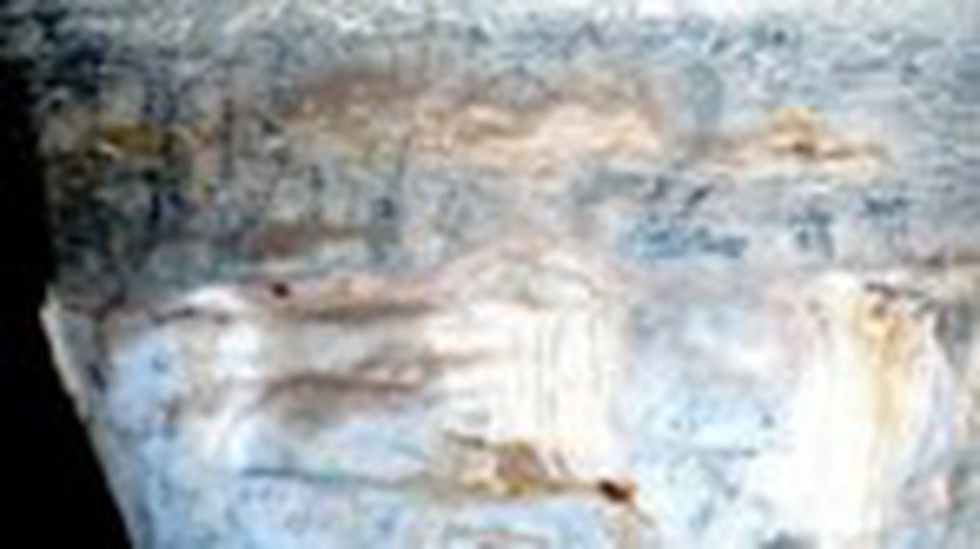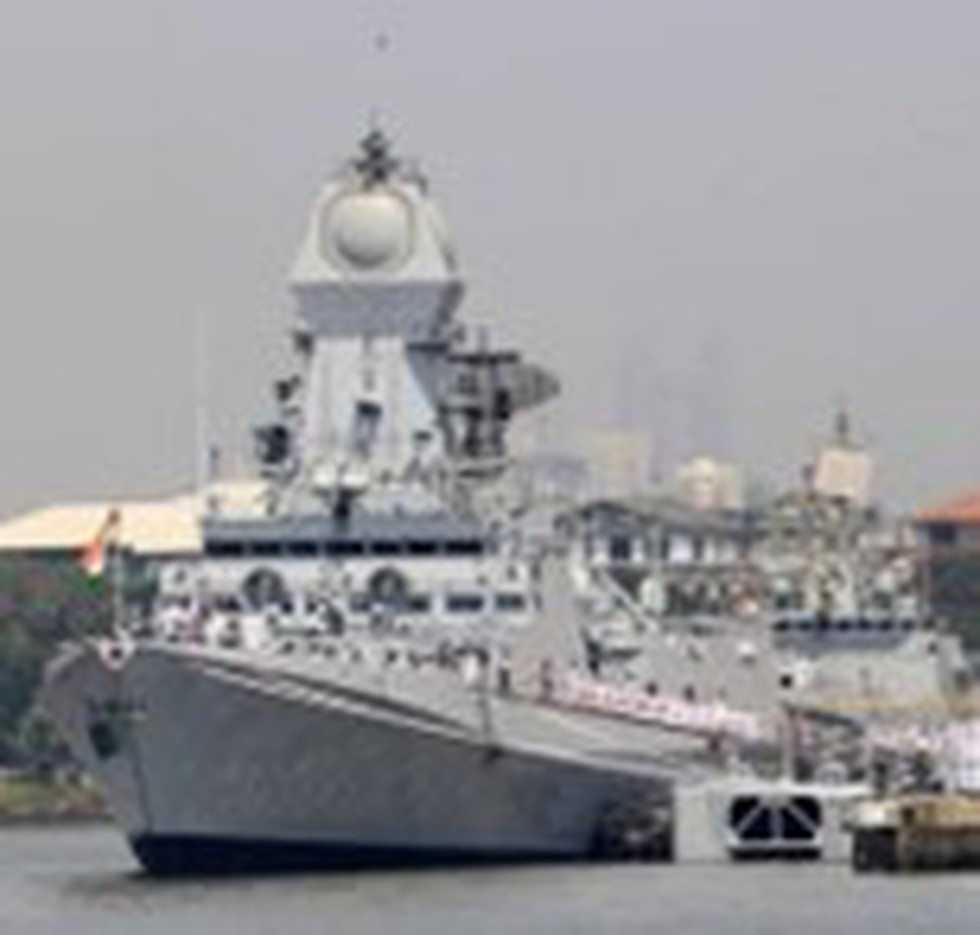
About Andriamamelo Cave:
- It is situated in the western Madagascar.
- It is located in karstified limestone of the Paysage Harmonieux Protege de Beanka.
- This is part of an extensive karst region that includes the Parc National de Bemaraha to the south, a UNESCO World Heritage site, and the little-studied Antsingimavo karst area to the north.
Key findings:
- In this cave truly pictorial art, depicting images of nature with human-like and animal-like figures have been discovered.
- The dramatic discoveries contained several surprises, including hints at some remarkable cultural connections.
- First, scenes depicted in some cases linked up fairly directly to Egyptian religious motifs from the Ptolemaic period (300-30 BCE).
- Second, other inferences from symbols and writing on the walls showed connections to the Ethiopian and Afro-Arab worlds.
- Finally, prevalent symbology and motifs evoked a two-millennia-old cave art style from Borneo.
- At least three extinct animals of Madagascar (thought to have been extinct for many centuries) may be depicted – a giant sloth lemur, elephant birds and a giant tortoise.
- Egyptian connections are hinted at in eight major images, including a falcon (Horus); the bird-headed god Thoth; the ostrich goddess Ma`at and two human-animal figures which were similar to Anubis – an ancient Egyptian god usually depicted as a man with a canine head.

About Solid-fuel missiles:
- Solid-fuel missiles do not need to be fuelled immediately ahead of launch.
- They are often easier and safer to operate, and require less logistical support.
- They are harder to detect and more survivable than liquid-fuel weapons.
- Working of Solid Fuel Technology
- Solid propellants are a mixture of fuel and oxidiser.
- Metallic powders such as aluminium often serve as the fuel, and ammonium perchlorate, which is the salt of perchloric acid and ammonia, is the most common oxidiser.
- The fuel and oxidiser are bound together by a hard rubbery material and packed into a metal casing.
- When solid propellant burns, oxygen from the ammonium perchlorate combines with aluminium to generate enormous amounts of energy and temperatures of more than 5,000 degrees Fahrenheit (2,760 degrees Celsius), creating thrust and lifting the missile from the launch pad.
Solid Fuel VS Liquid Fuel Missiles
- Liquid propellants provide greater propulsive thrust and power, but require more complex technology and extra weight.
- Solid fuel is dense and burns quite quickly, generating thrust over a short time.
- Solid fuel can remain in storage for an extended period without degrading or breaking down - a common issue with liquid fuel.

About the Blue dragons:
- The blue dragon (Glaucus atlanticus) is a type of mollusc known as a nudibranch.
- They also are known as blue sea slugs, blue angels, and sea swallows.
- It rarely grows larger than three centimetres long.
- An air bubble stored in its stomach keeps the blue dragon afloat.
- Distribution: It can be found drifting on the surface of the Atlantic, Pacific and Indian oceans in temperate and tropical waters.
- Diet:
- They feed on venomous siphonophores such as the Portuguese man-o-war and bluebottle, which also occur in ocean surface waters.
- The dragons appear immune to the nematocysts – stinging cells – of these jellyfish-like creatures.
- They incorporate these cells into multiple finger-like structures protruding from their body which provides them with a potent form of protection from predators.
- The slug isn't venomous all on its own, however, it stores the stinging nematocysts created by the creatures on which it feeds.
- Its sting can cause problems, especially to children and elderly.
- One sting from this little creature can lead to nausea, pain, vomiting, acute allergic contact dermatitis, and post-inflammatory hyperpigmentation.
- They are hermaphrodites, meaning they have both male and female reproductive organs.

About the National Culture Fund:
- It was set up by the Government of India as a Trust under the Charitable Endowment Act, 1890 through a Gazette Notification in 1996.
- It was established as a funding mechanism distinct from the existing sources and patterns of funding for the arts and culture in India. It will enable institutions and individuals to support arts and culture directly as partners with its government.
- It aims to mobilise extra resources through Public-Private Partnership (PPP) towards promoting, protecting & preserving India’s Cultural Heritage (Tangible & Intangible).
- It is managed and administered by a Council and an Executive Committee to actualize those policies.
- The Council is chaired by the Union Minister of Culture and has a maximum strength of 24 including both the Chairman and Member Secretary.
- It has members representing the corporate and public sector, private foundations and non-profit organisations.
- The purpose for this structure is to increase non-government representation in the decision-making process.
- The Executive Committee is chaired by the Secretary, Ministry of Culture
- The donations to the national Culture Fund will be eligible for tax benefit under the Income Tax Act.

About Late Blight disease:
- It is caused by the fungus Phytophthora infestans.
- It is the most important disease of potato that can result in crop failures in a short period if appropriate control measures are not adopted.
- It is common in humid regions with temperatures.
- Symptoms:
- The first symptoms of late blight appear as small, light to dark green, circular to irregular-shaped water-soaked spots.
- During cool, moist weather, these lesions expand rapidly into large, dark brown or black lesions, often appearing greasy. A pale green to yellow border often surrounds the lesions
- Mode of spread:
- The infected tubers and the infected soil may serve as a source of primary infection.
- The diseased tubers are mainly responsible for persistence of the disease from crop to crop.
- The air borne infection is caused by sporangia.
- This disease can be controlled by the prompt destruction of infected crop residue from the field to prevent the spread of the disease to nearby fields.

About Chit Funds:
- Chit funds are a financial instrument that is used in both borrowing and saving aspects.
- Chit fund is also termed Kuri and Chitty.
- Chit funds are a kind of financial arrangement wherein a few individuals gather and pool a fixed sum of money at regular intervals.
- This is done with an understanding or agreement that a single member of the group will receive the total sum of money collected during each interval.
- This process continues until every member has received their share of the pooled money.
- This type of financial instrument is generally conducted by a chit-fund company that is responsible for the smooth carrying out of this process.
- How Do Chit Funds Work?
- Under a chit fund scheme, a number of individuals make contributions towards the chit value at regular intervals for a period equal to the total number of subscribers or members (investors).
- A person, chosen through an auction or a lucky draw, receives the money collected.
- Through an auction allotment system, an individual who agrees to receive the lowest amount (with the lowest bid) gets the money. It is known as a reverse auction system.
- The sum forgone by a winner is distributed equally among the other bidders post subtracting a foreman’s charges and commission.
- An amount that each bidder receives is termed a dividend.
- A winning bidder will continue to invest even after agreeing to claim the sum.

About SAMAR Air Defence Missile System:
- Surface to Air Missile for Assured Retaliation (SAMAR) is a short-range air-defence system.
- It has been developed by a unit under the IAF’s Maintenance Command.
- The system is credited with a maximum range of 10–12 km and is used against low-flying aerial targets.
- It can engage aerial threats with missiles operating at a speed range of 2 to 2.5 Mach.
- The SAMAR-1 system uses the IAF's existing inventory of shelf-life-expired Russian Vympel R-73E infraredâ€guided air-to-air missiles (AAMs) for the surface-to-air role.
- The system features a twin-turret launch platform capable of launching two missiles in single and salvo modes, depending on the threat scenario.
- Each missile launcher had an electro-optic system visible.
- It is expected to supplement the IAF’s Akash and SPYDER systems, replacing the ageing improved Pechora and OSA-AK systems.
Key Facts about Akash Missile (SAM) Defence System:
- It is a Short-Range Surface-to-Air Missile (SRSAM) Defence System to protect vulnerable areas and points from air attacks.
- It was indigenously designed and developed by the Defence Research and Development Organisation (DRDO).
- Features:
- It can simultaneously engage multiple targets and destroy manoeuvring targets, including unmanned aerial vehicles, fighter aircraft, cruise missiles, and missiles launched from helicopters.
- It has built-in Electronic Counter-Counter Measures (ECCM) features.
- The entire weapon system has been configured to be launched from static or mobile platforms such as battle tanks and wheeled trucks, providing flexible deployment.
- It is road and rail transportable, with quick mobilisation and deployment capabilities.
- It can engage aerial targets up to a range of approximately 25 km.

About Mullaperiyar Dam:
- It is a masonry gravity dam situated on the Periyar River in Thekkady, Idukki district, in Kerala.
- It is located 881 m above sea level, on the Cardamom Hills of the Western Ghats.
- The dam is built at the confluence of the Mullayar and Periyar rivers.
- Its construction began in 1887 and was completed in 1895. The construction was carried out by the British Corps of Royal Engineers under the leadership of Pennycuick.
- The dam was constructed with limestone and “Surkhi" (burnt brick powder and a mixture of sugar and calcium oxide).
- The dam's purpose was to divert the waters of the west-flowing River Periyar eastward to the arid rain shadow regions of the Theni, Madurai, Sivaganga, and Ramanathapuram districts of Tamil Nadu.
- The Periyar National Park is located around the dam's reservoir.
- Although the dam is located in Kerala, it is operated and maintained by the neighbouring state of Tamil Nadu. It was according to a 999-year lease agreement made during British rule that the operational rights were handed over to Tamil Nadu.

About the Bab-El-Mandeb Strait:
- It is a strait of great strategic and economic importance, connecting the Red Sea in the northwest to the Gulf of Aden and the Indian Ocean in the southeast.
- It also separates Arabia, in the northeast, from the African continent, in the southwest.
- It further acts as a link between the Indian Ocean and the Mediterranean Sea via the Red Sea and the Suez Canal.
- The name of the strait, Bab El-Mandeb means “Gate of Tears” in Arabic, referring to the large number of shipwrecks that have occurred in this region.
- The strait is 30 kilometres (KM) wide and is divided into two channels by the Yemeni island of Perim, with the eastern channel being called Alexander’s Strait and is around 3 kilometres wide, while the western-lying Dact-el-Mayun Channel is 26 kilometres wide.
- The flow through this strait provides for the circulation between the Red Sea and the Gulf of Aden, since no flow takes place through the Suez Canal.

About INS Kochi:
- It is the second ship of the Kolkata-class stealth guided-missile destroyers built under the code name Project 15A for the Indian Navy.
- It was constructed by Mazagon Dock Limited (MDL) in Mumbai.
- It was commissioned into the Indian Navy on September 30, 2015.
- Features:
- It is equipped with the advanced supersonic and long-range BrahMos Surface-to-surface Missile.
- The entire anti-submarine weapon and sensor suite fitted onboard, consisting of Indigenous Rocket Launchers (IRL), Indigenous Twin-tube Torpedo Launchers (ITTL), and a bow-mounted New Generation HUMSA Sonar, are fine examples of India’s indigenous efforts in the field of underwater warfare.
- A state-of-the-art Combat Management System (CMS-15A) has been integrated with the onboard weapons and sensors.
- The ship is equipped to operate two Seaking or Chetak helicopters.


























































































































































.png)
.png)
.png)
.png)
.png)


.png)
.png)
.png)





.png)
.png)






.png)
.png)
.png)
.png)
.png)
.png)
.png)
.png)
.png)

.png)







.png)
.png)


.png)
.png)
.png)


.png)

.png)
.png)





.jpg)

.png)
.png)


.png)

.png)
.png)
.png)

.jpg)

.jpg)


.png)

.png)
.png)
.png)
.png)
.png)
.png)
.png)
.png)
.png)
.png)




.png)

.png)





.png)
.png)
.png)
.png)
.png)
.png)
.png)
.png)
.png)
.png)
.jpg)
.jpg)

.png)
.png)
.png)
.png)
.png)
.png)
.png)
.png)
.png)
.png)
.png)
.png)
.png)
.png)
.png)
.png)
.png)
.png)
.png)
.png)
.png)
.png)



.png)
.png)

.jpg)
.jpg)


.jpg)
.jpg)
.jpg)
.jpg)
.jpg)

.jpg)








.jpg)
.jpg)
.jpg)
.jpg)
.jpg)

















.jpg)
.jpg)







.jpg)


















.jpg)
.jpg)






























































































.jpg)
.jpg)


























.jpg)

.jpg)










.jpg)








.jpg)




.jpg)










.jpg)


















.jpg)












































.jpg)














.jpg)
.jpg)
.jpg)





.jpg)

.jpg)
.jpg)





































































.jpg)


































.jpg)
.jpg)
















































.jpg)












.jpg)


.jpg)




.jpg)
.jpg)
.jpg)

.jpg)
.jpg)
.jpg)
.jpg)

.jpg)
.jpg)
.jpg)

.jpg)
.jpg)
.jpg)
.jpg)
.jpg)
.jpg)
.jpg)
.jpg)

.jpg)


.jpg)
.jpg)
.jpg)
.jpg)
.jpg)
.jpg)
.jpg)
.jpg)
.jpg)
.jpg)











.jpg)
.jpg)





.jpg)
.jpg)
.jpg)
























.jpg)
























.jpg)









.jpg)
.jpg)







.jpg)
.jpg)









































.jpg)
.jpg)
.jpg)
.jpg)
.jpg)

.jpg)
.jpg)
.jpg)
.jpg)
.jpg)


.jpg)
.jpg)
.jpg)
.jpg)
.jpg)

.jpg)
.jpg)
.jpg)
.jpg)
.jpg)
.jpg)
.jpg)
.jpg)
.jpg)
.jpg)
.png)

.png)
.png)

.png)
.png)
.png)
.png)


.jpg)
.jpg)

.jpg)
.jpg)
.jpg)

.png)
.png)
.png)
.png)
.png)
.png)
.png)

.png)
.png)
.png)
.png)
.png)
.png)
.png)
.png)
.png)
.png)





































































-min.png)



.png)




.png)








































